
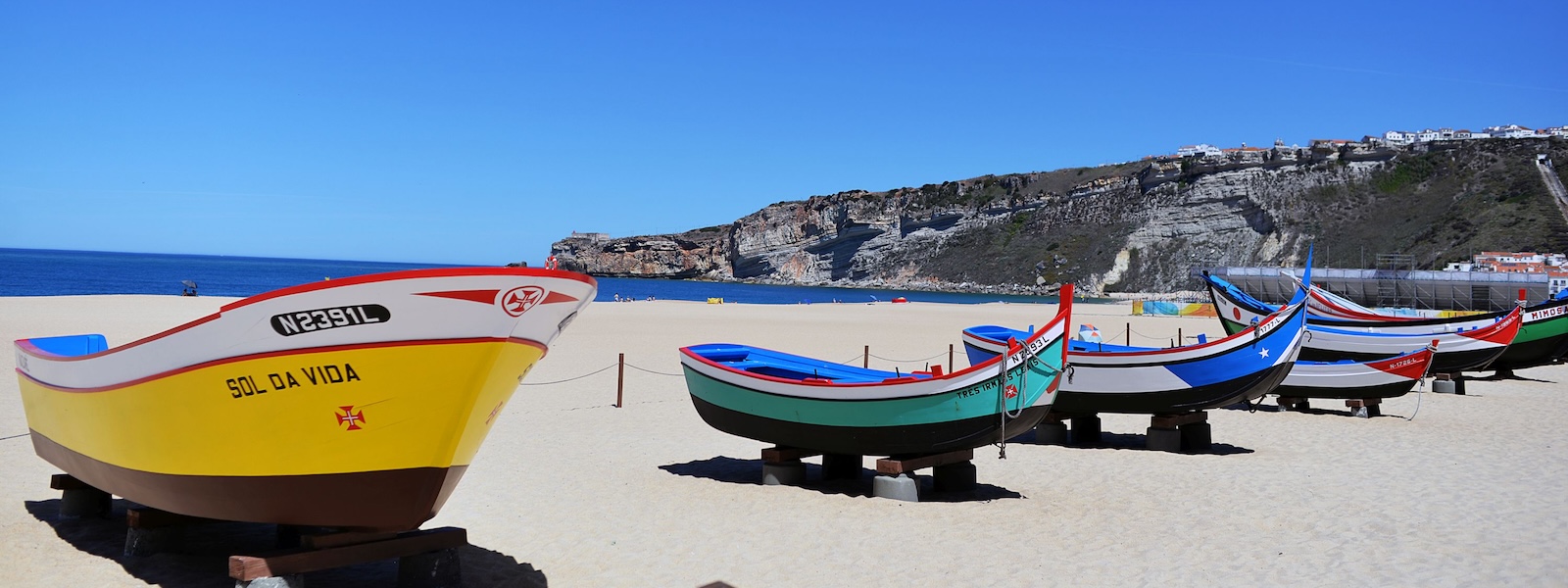
Traditional Boats of Nazaré
![]()
A Living Tribute to the Town's Maritime Soul
Since summer 2015, Nazaré's beach has hosted a permanent exhibition of traditional fishing boats. Located in front of the Cultural Centre and near the Sun-dried Fish Museum, this open-air display preserves the memory of Nazaré's deep-rooted fishing traditions. These boats once sailed the Atlantic, central to the town's economy, identity, and daily life.
The Traditional Boats of Nazaré Exhibition is a vivid tribute to a proud maritime legacy. By preserving and displaying these vessels, Nazaré offers both residents and visitors a powerful connection to its living heritage-one shaped by the sea and carried forward through storytelling, craftsmanship, and community.
Historical Context
Nazaré's coastline has long been home to diverse fishing techniques and unique vessels, adapted to its challenging waters. Boats were built by local craftsmen, designed for Xávega fishing, candil netting, and rescue operations. The exhibition offers a rare opportunity to see these authentic vessels up close, celebrating cultural preservation and community pride.
Cultural Significance
These boats are more than historical artifacts-they are symbols of identity, resilience, and collective memory. The exhibition pays tribute to generations of fishermen and their families, who shaped the rhythms of life in Nazaré. Visitors gain a deeper appreciation for the risks, skills, and traditions of coastal communities.
A Symbolic Setting by the Sea
The Traditional Boats of Nazaré Exhibition is set in one of the town's most iconic and symbolic locations. This carefully chosen setting allows visitors to experience the exhibition in its authentic context, surrounded by the sights, sounds, and spirit of Nazaré's fishing culture. It creates a seamless blend of past and present, where tradition lives on in the very sand that shaped it.
-
Directly on the beach, where these boats once launched and returned from sea.
-
In front of the Centro Cultural da Nazaré, a hub of creativity and community.
-
Adjacent to the Museu do Peixe Seco (Sun-dried Fish Museum), offering a complementary look into Nazaré's fishing heritage.
A Cultural Journey for All
-
Free and open-air, this exhibition is accessible year-round to everyone, making it one of Nazaré's most welcoming cultural attractions.
-
Perfect for a wide range of visitors, including:
-
Cultural tourists seeking authentic heritage experiences
-
Students and researchers exploring maritime history and traditional crafts
-
Families looking for educational and engaging outdoor activities
-
Photographers and artists inspired by timeless subjects and dramatic coastal light
-
Featured Boats
Each boat on display represents a specific function or fishing
technique:
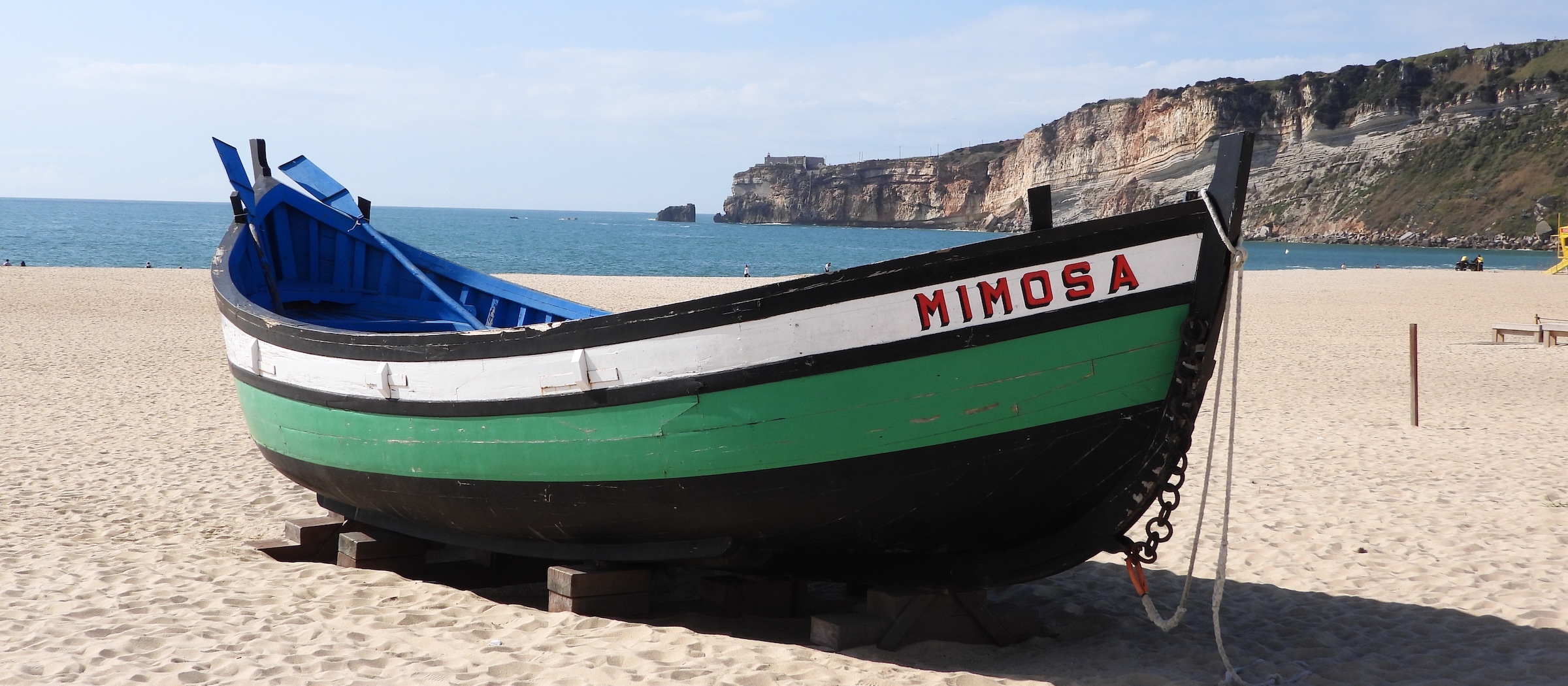
A boat used in the Valenciana net system, designed for dragging large nets close to shore. - Photo by Rental Retreats
"BARCA MIMOSA"
Designed for use in the intricate "Valenciana net system," the Mimosa played a vital role in a traditional sardine fishing method that relied on fixed nets and the coordination of at least four strategically positioned vessels at sea. These nets remained in place throughout the summer, only being retrieved in September. The Mimosa was part of the "Juncal" net system, operated by Cândido Rodrigues and Company.
In addition to its role in the Valenciana method, the boat was likely employed in the "American siege" system of fishing. In later years, with the advent of trawlers, boats like the Mimosa were also used to transport people and fish between the offshore buoys and the shoreline.
A candil boat, formerly used for nighttime fishing by lamplight. - Photo by Rental Retreats
CANDIL BOAT "VAGOS"
A traditional form of local fishing, the candil technique was practiced at night in the tranquil waters of the bay of Nazaré. The auxiliary boat, equipped with a lighting system mounted at the stern, cast its glow across the sea to attract fish to the surface, guiding the rhythm of this age-old nocturnal harvest.

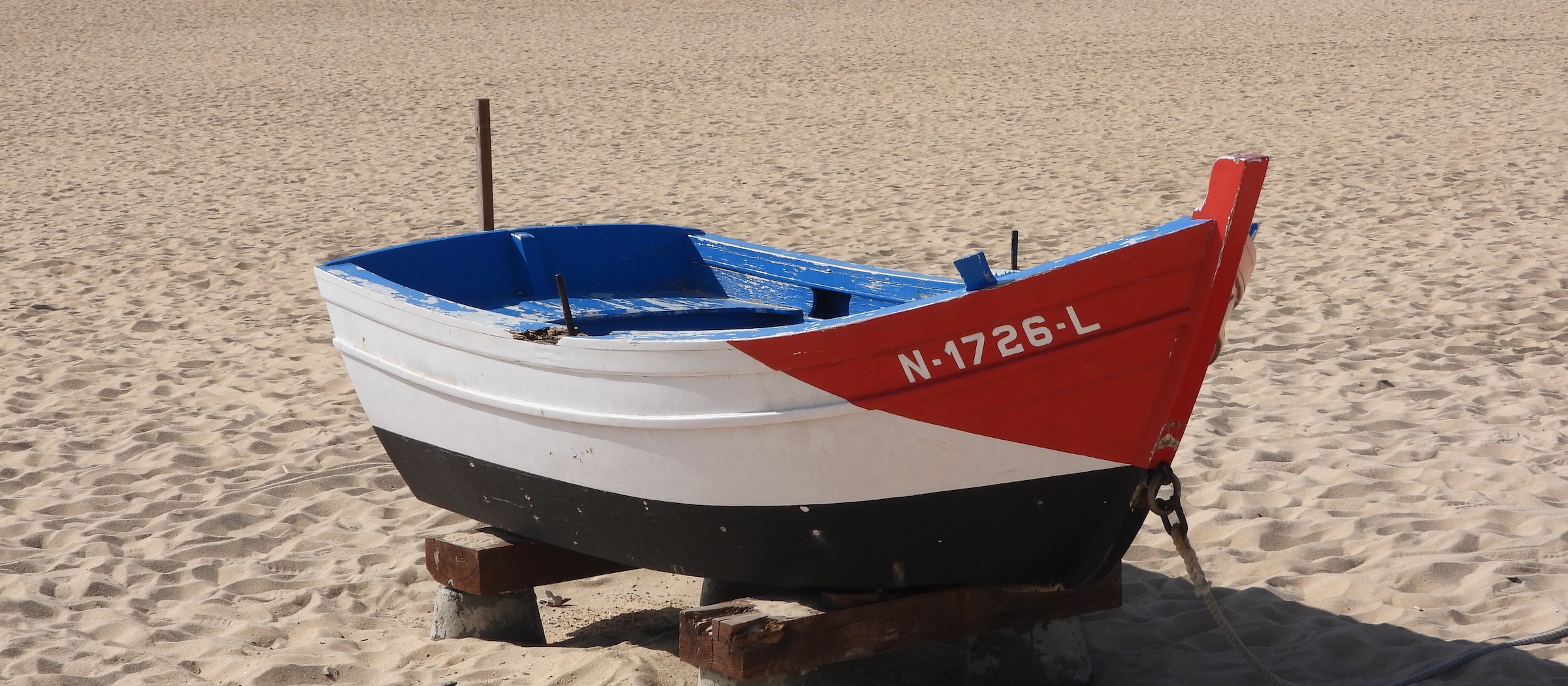
A humble rowing boat and faithful auxiliary to the Vagos, equipped with traditional oil-lamp lights for night fishing in Nazaré's bay. - Photo by Rental Retreats
AUXILIARY BOAT "ILDA"
A modest rowing vessel, this boat was registered with the Port Authority of Nazaré for use in local fishing, employing angling gear and unspecified nets. Serving as the auxiliary to the candil boat Vagos, it was built to accommodate up to two crew members.
Once owned by João Pombinha Vagos (Joaquim Codinha Bagos), both the Vagos and its companion vessel were acquired by the Dr. Joaquim Manso Museum in 1981, preserving their legacy.
At its stern, the boat featured a crosshead fitted with two oil-lamp lights (fogachos)-a traditional lighting system essential to night fishing. These lamps illuminated the area where the fisherman worked, while also drawing fish to the surface under the soft glow.


A traditional Xávega art boat, tied to one of the oldest fishing techniques in Portugal. - Photo by Rental Retreats
ARTE XÁVEGA BOAT "PERDIDO"
A traditional expression of local fishing, the Xávega net method stands as one of the most characteristic techniques of the Nazaré coast. The nets were cast into the sea at various lances-carefully chosen strategic points-and, after approximately an hour and a half, were hauled back to shore.
Two rows of men and women worked in unison, pulling the ropes and dragging the heavy net bag through the sand. The catch was then placed in xalavares or baskets and carried to the auction.
The boat's high, elevated bow was specially designed to ease its entry through the waves. Crewed by a team of three to seven people, it embodied the spirit of collective labour and deep-rooted maritime tradition.

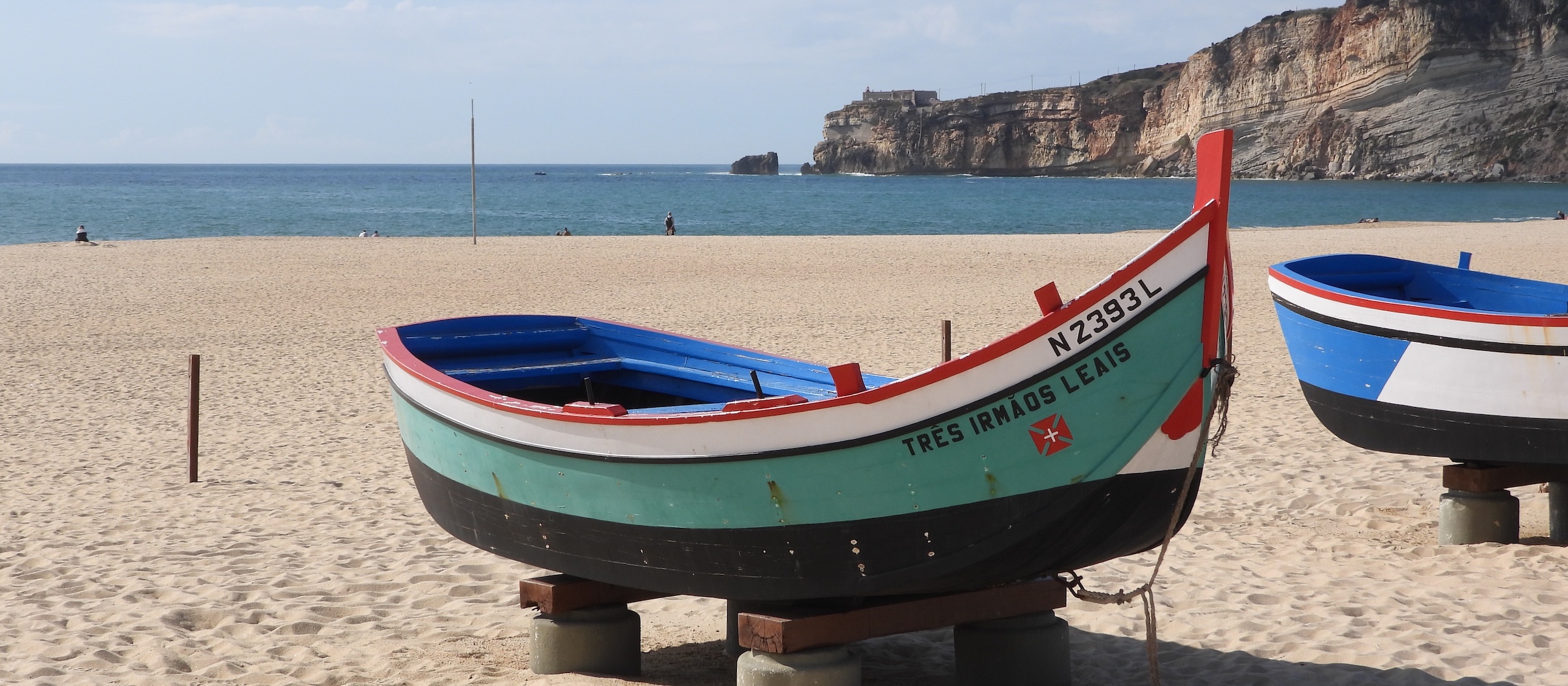
Later addition to the exhibition, expanding representation of the fishing fleet - Photo by Rental Retreats
BOAT "TRÊS IRMÃOS LEAIS"
This vessel stands as the last officially licensed boat to fish with Xávega nets, registered with the Port Authority of Nazaré.
Between 1995 and 2011, during the months of May and June, the boat and its crew became central figures in the Historical Reproduction of Arte Xávega. Supported by the local municipality, fishermen, and various community entities, these reenactments aimed to celebrate and preserve the maritime culture of Nazaré-highlighting the artisanal nature of a tradition that holds both cultural and touristic significance.
In 2015, the boat was acquired by the municipality from its former owner, Mr. Alexandre Brogaja Mendes, who generously donated the original fishing gear and nets, ensuring that this legacy would endure for future generations.

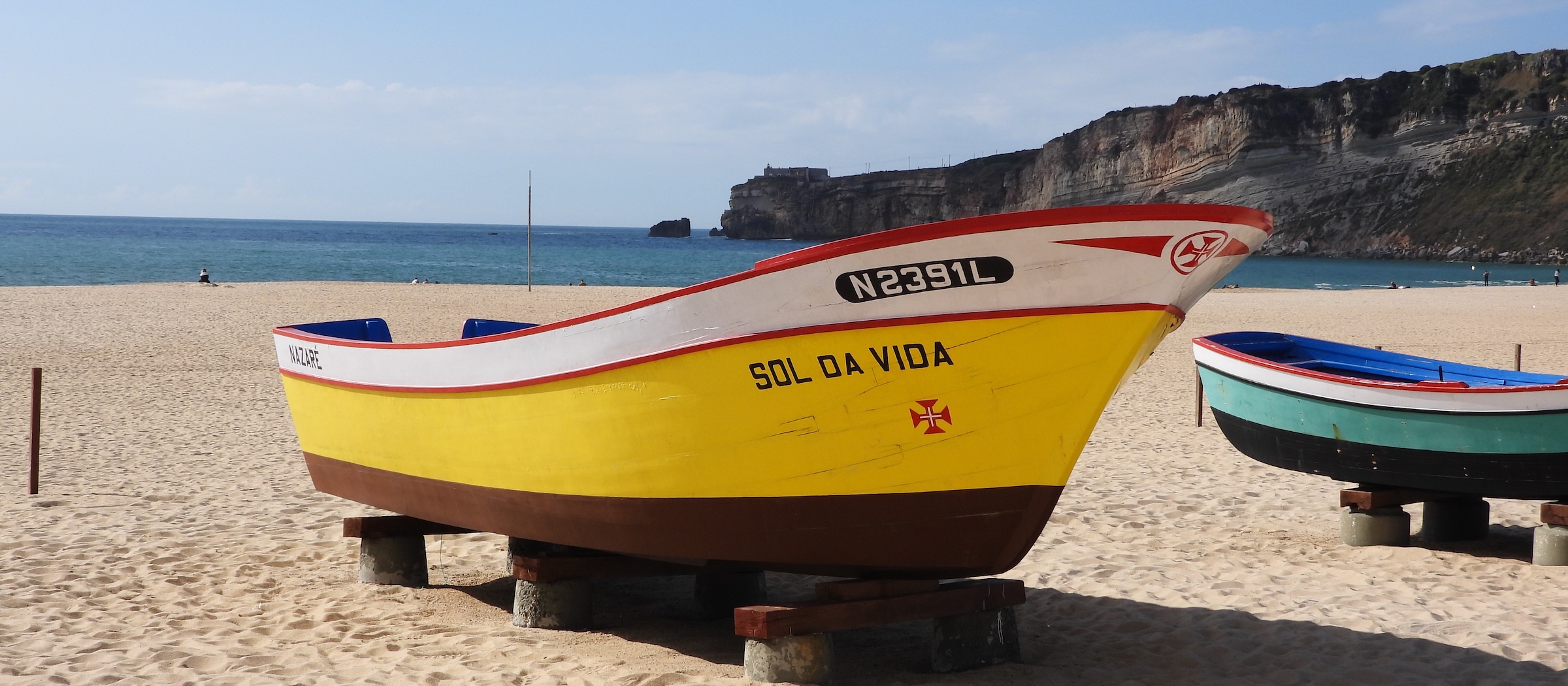
Another emblematic fishing vessel preserving Nazaré's fishing legacy.- Photo by Rental Retreats
BOAT "SOL DA VIDA"
The Sol da Vida was built for artisanal local fishing, employing traditional techniques such as angling, trammel nets, seine, and tuck-nets-methods deeply rooted in the coastal heritage of Nazaré.
This vessel was generously donated to the Town Hall of Nazaré by the family of its owner, Mr. José Manuel Limpinho Salzinha, to become part of the exhibition of traditional boats that embodies the maritime history of the village.
Born in Nazaré on May 8th, 1946, José Manuel Limpinho Salzinha was one of many brave Nazarenes who joined fishing crews bound for the harsh waters of the North Seas, contributing to the legacy of the Guild of Ship-owners of Cod Fishing Vessels. A seasoned fisherman, admired by his peers for his experience and skill, Salzinha devoted his life to the sea.
Tragically, on April 25th, 2011, at the age of 64, he lost his life when the vessel Bruna, on which he served, capsized. Like so many others before him, the sea claimed one of its own-a man who had spent his life navigating its beauty and its peril, in tireless dedication to his craft.

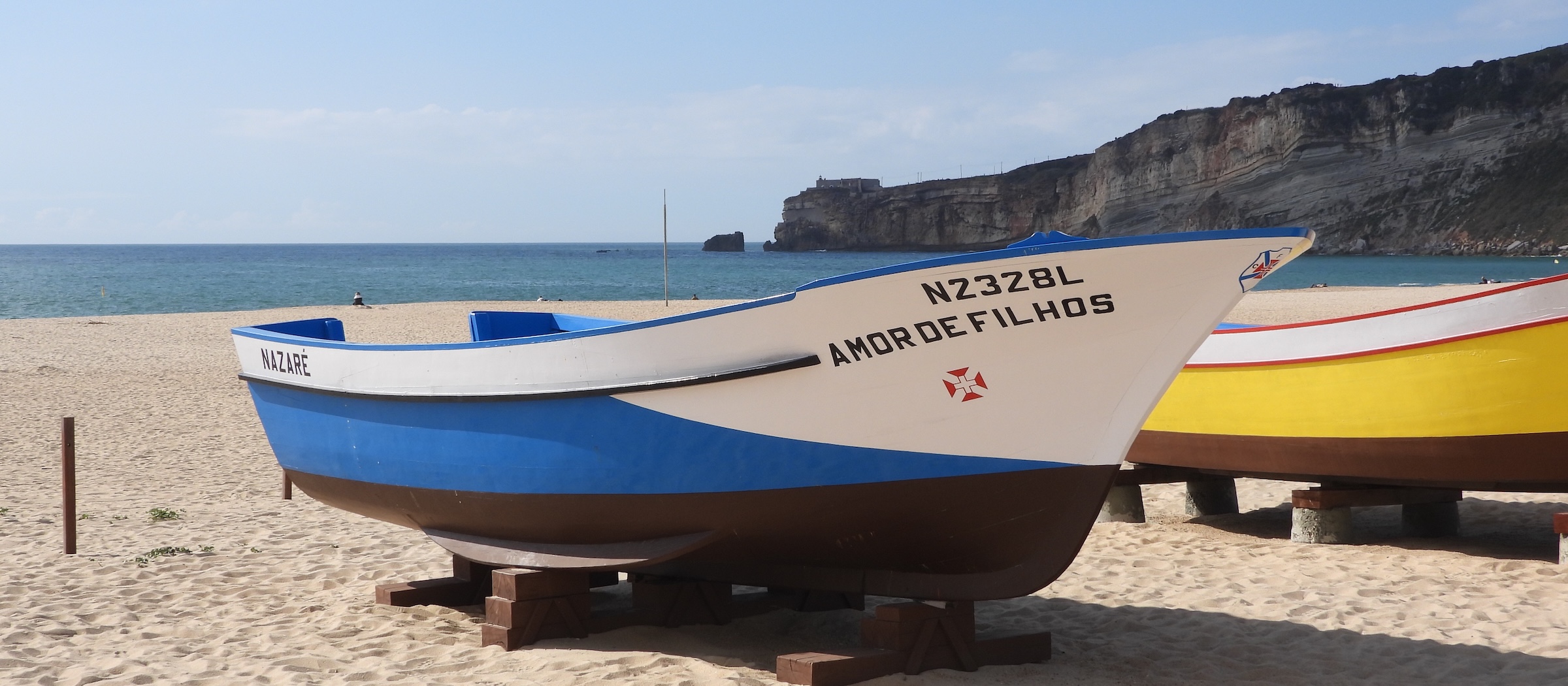
The most recent addition, another candil boat, showcasing continued community engagement in preserving maritime heritage.- Photo by Rental Retreats
BOAT "AMOR DE FILHOS"
This vessel was once used in artisanal local fishing, specifically in the practice of candil fishing-a traditional technique from Nazaré that employed haphazard netting seines and torchlight to lure horse-mackerel, Atlantic chub mackerel, sardines, and other species to the surface.
Belonging to Eduardo Veríssimo Chalabardo, the boat was generously donated by his family to the Town Hall of Nazaré to become part of the exhibition of traditional boats, preserving a living memory of the village's maritime heritage.
Eduardo Veríssimo Chalabardo was born on September 20th, 1936, and passed away on August 22nd, 2021, at the age of 84. Like many Nazarenes before him, he sailed to the distant North Seas as part of the cod fishing fleets, contributing to the proud legacy of the Guild of Ship-owners of Cod Fishing Vessels.
This donation stands as a tribute to Mr. Chalabardo's life and his enduring contribution to the history and soul of fishing in Nazaré.

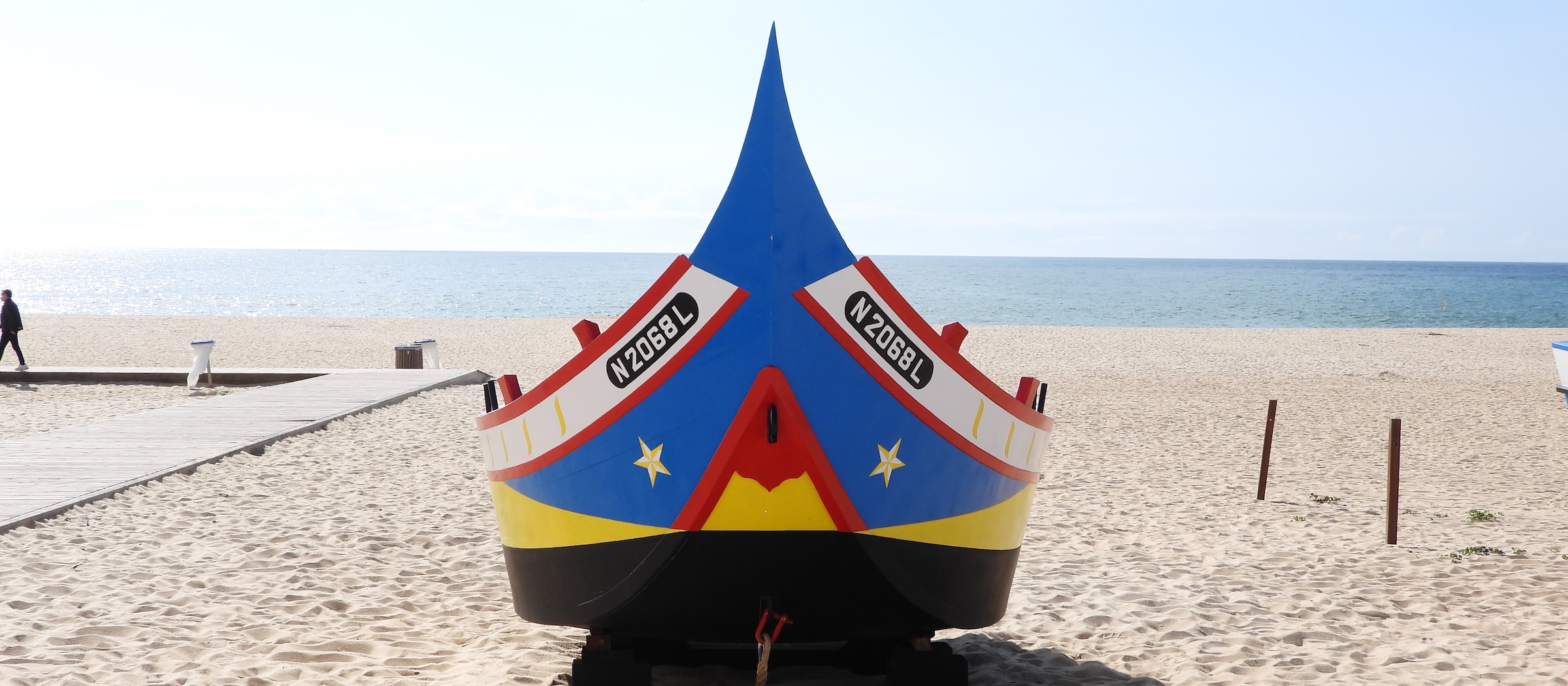
A historic Xávega fishing boat embodying the strength and solidarity of Nazaré's fishing tradition.- Photo by Rental Retreats
ARTE XÁVEGA BOAT "D. NUNO ÁLVARES PEREIRA"
Donated by fisherman João de Deus Estrelinha, this vessel is a living symbol of one of Nazaré's most intricate and emblematic fishing techniques-the arte xávega. Once a cornerstone of the local way of life, this method began to fade from practice in the mid-1980s, following the construction of the Porto de Abrigo.
The arte xávega demanded extraordinary effort and coordination. Fishermen relied on one another to launch and retrieve both boats and nets from the sea-a task made all the more arduous by the forces of nature. This physically demanding work was often supported by the strength and dedication of women and children, whose collective labor formed the backbone of this remarkable tradition.
https://findoutnazare.pt/en/listing/embarcacoes-tradicionais-da-nazare/
